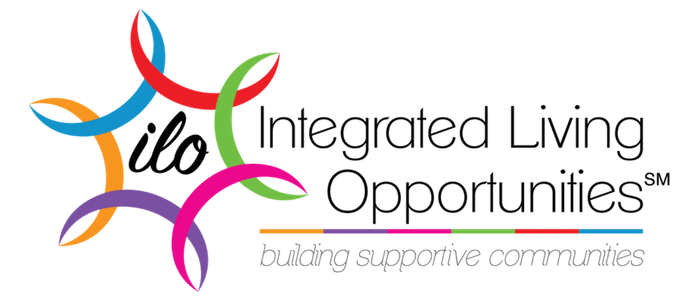In the last five years, ILO has grown by leaps and bounds. In that time, we have helped many self-advocates transition from living with family/caregivers to living in their own home. We create supportive and supported communities in which our self advocates can live independent, connected, and fulfilled lives. We do this by developing personal and professional networks of support between self-advocates, family members, friends, professionals and support service providers. We also create partnerships and gather support from various community organizations.
An important way to ensure that we continue to form and develop these partnerships and spread the word about ILO is to use social media. As we all know, it is one of the most significant tools of communication in the modern world.
Below is a quick user guide to ILO’s social media – it includes all the different outlets we use, links to help you navigate our different sites, and tips so that you can help us spread ILO’s message and continue to grow our valuable organization.
Which Social Media Outlets Does ILO Use?
ILO uses two primary social media outlets: Facebook and Twitter. I’m sure all of us are aware of the differences between these two websites – and no doubt we all have a preference. In the event that you would like to dig a little deeper, however, here is a handy article that goes into detail about the differences, including the pros and cons, of each of these outlets.
ILO on Facebook
ILO’s public Facebook page can be accessed via this link. On the top of the page, just underneath the cover photo (which, FYI, is an excellent ILO group shot from our most recent Hike-n-Bike along the C&O Canal) you will see the option to Like and Follow. If you would like to stay up to date on all the ILO news, please take a moment to both Like and Follow our page. This will ensure that you see our posts and activity in your timeline. As well, interact with our posts – i.e. “like” posts and photos, share our status updates, etc. This will ensure that you see our content on a regular basis.
You will also see a Donate button – as a non-profit, we rely on donations and support from our communities to continue to provide quality services to our self-advocates. Please share this ability to donate directly to ILO with your friends and family.
ILO also has a private Community Group Facebook page. Here, members of Community Group gather to share news, photos, details about upcoming events, etc. Only members of Community Group can access this page. If you would like to join Community Group, or would like more information, visit our Community Group page. If you are already a member of Community Group and would like to begin using the private page, here is the link to the page.
ILO on Twitter
ILO’s Twitter Feed can be accessed via this link, or by searching info_ilo. Twitter differs from Facebook in a few ways – for starters, a Facebook post or status can be as long as desired. Twitter’s updates, or “tweets” are restricted to 140 characters or less. Connecting on Facebook happens through “friending” a person, “liking” a page, or “joining” a group. Twitter users “follow” each other. Twitter, due to its limited character use, and the rapid exchange of information as people “retweet” (sharing a tweet from someone that they follow) is more suited towards the quick sharing of information, news, etc. Hashtags (#) is the key tool on Twitter – see below for more information on hashtags and how to use them.
Hashtags (#
Adding a hashtag (#) before a keyword or phrase (no spaces between words in that phrase) turns that phrase into a link. Clicking on that link allows you to see everyone else who is using that hashtag to share in a conversation. Hashtags are handy tools to get information and news about topics dear to your heart. And the advocacy and support done by ILO is surely one of those topics. So… hashtags link you to other news and stories that include the keyword, which makes for rapid spread of information. When you search for a hashtag in Facebook, like #disabilityactivism, you will be able to see public content related to that keyword. And you are able to join the conversation if you write a public post, quoting this hashtag.
If you are a Facebook or Twitter user, be sure to include that relevant hashtag that you found in your own post on your page. A viewer of your post can then click on that hashtag to see similar posts, thus “spreading the word.” You can find a treasure trove of conversation out there by searching for just about any term. For example, in just a few minutes, we found these topics by searching #disabilityactivism:
- #livingwithdisabilities
- #LivingWithDisability
- #disability
- #abilitynotdisability
- #disabilityemployment
- #Livingwithdisability
- #disabilityeducation
- #disabilityawareness
- #disabilityadvocacy
- #youarenotalone
- #inclusion
- #advocacy
- #specialeducation
- #fightingfordisabilityrights
- #thisiswhatdisabilitylookslike
- #autismawareness
- #autismspeaks
- #makeeducationaccessible
- #peoplewithdisabilities
- #disabilityinclusion
As for hashtags that you see in our Facebook and Twitter posts, commenting on those posts gets them noticed by other readers. We definitely want more people to know what ILO stands for and does! So please make worthy comments and help us get our community out there in the public eye.
